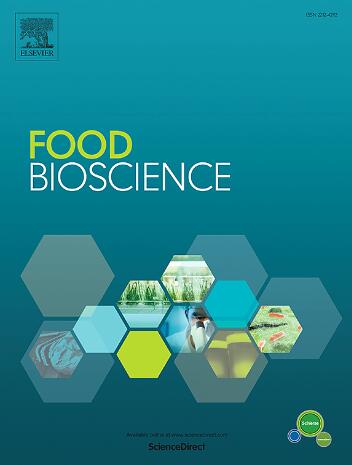Lichen extracts inhibit Candida albicans growth and biofilm formation via cAMP-PKA and Cek1 MAPK signaling pathway
IF 4.8
1区 农林科学
Q1 FOOD SCIENCE & TECHNOLOGY
引用次数: 0
Abstract
The increasing prevalence of Candida infections and growing concerns about antifungal resistance have encouraged research into new therapeutic agents from natural sources. This study investigated the antifungal activity of Dermatocarpon miniatum (L.) W. Mann and Parmelia saxatilis (L.) Ach. lichen extracts against Candida species, focusing on their antibiofilm effects and underlying molecular mechanisms. Methanol and aqueous extracts of both lichens were prepared and evaluated against four reference and 19 clinical Candida strains using microdilution methods. This study employed a multi-modal approach to explore the antibiofilm effect of lichen extracts on Candida albicans, including CCK-8 assay for antibiofilm capacity, qRT-PCR for biofilm-related (cAMP-PKA and Cek1 MAPK pathways) gene expressions, field emission scanning electron microscopy for morphological assessment, and Galleria mellonella infection model for in vivo evaluation. Antifungal susceptibility tests revealed only methanol extracts showed antifungal activity, with minimum inhibitory concentrations ranging from 160 to 2500 μg/mL for P. saxatilis methanol extract (ParM) and 320–2500 μg/mL for D. miniatum methanol extract (DerM). ParM (1250 μg/mL) significantly reduced biofilm formation and down-regulated key genes involved in both pathways. Methanol extracts of lichens disrupted hyphal networks and cell integrity. In the Galleria mellonella model, DerM provided protection similar to fluconazole, while ParM provided 60 % survival. These findings indicate that lichen extracts, particularly ParM, inhibit Candida albicans biofilm formation by downregulating genes in the cAMP-PKA and Cek1 MAPK pathways. Despite the promising antibiofilm and in vivo activities of these extracts, their limited antifungal activity against Candida suggests that further research is needed for their therapeutic potential.

地衣提取物通过cAMP-PKA和Cek1 MAPK信号通路抑制白色念珠菌生长和生物膜形成
念珠菌感染的日益流行和对抗真菌耐药性的日益关注鼓励了对天然来源的新治疗剂的研究。本文研究了黄皮草的抗真菌活性。W. Mann and Parmelia saxatilis (L.)课时。地衣提取物对念珠菌的抗菌作用及其潜在的分子机制。制备了两种地衣的甲醇和水提取物,并采用微量稀释法对4种参考菌株和19种临床念珠菌进行了评价。本研究采用多模态方法探讨地衣提取物对白色念珠菌的抗菌膜作用,包括CCK-8法检测抗菌膜容量,qRT-PCR检测生物膜相关(cAMP-PKA和Cek1 MAPK通路)基因表达,场发射扫描电镜形态学评估,以及mellonella感染模型体内评估。抗真菌药敏试验显示,只有甲醇提取物具有一定的抑菌活性,其中沙草甲醇提取物(ParM)的最低抑菌浓度在160 ~ 2500 μg/mL之间,小红花甲醇提取物(DerM)的最低抑菌浓度在320 ~ 2500 μg/mL之间。ParM (1250 μg/mL)可显著减少生物膜的形成,下调两种途径相关的关键基因。地衣甲醇提取物破坏菌丝网络和细胞完整性。在mellonella模型中,DerM提供了与氟康唑相似的保护,而ParM提供了60%的存活率。这些发现表明,地衣提取物,特别是ParM,通过下调cAMP-PKA和Cek1 MAPK通路中的基因来抑制白色念珠菌生物膜的形成。尽管这些提取物具有良好的抗生物膜和体内活性,但其对念珠菌的抗真菌活性有限,表明其治疗潜力有待进一步研究。
本文章由计算机程序翻译,如有差异,请以英文原文为准。
求助全文
约1分钟内获得全文
求助全文
来源期刊

Food Bioscience
Biochemistry, Genetics and Molecular Biology-Biochemistry
CiteScore
6.40
自引率
5.80%
发文量
671
审稿时长
27 days
期刊介绍:
Food Bioscience is a peer-reviewed journal that aims to provide a forum for recent developments in the field of bio-related food research. The journal focuses on both fundamental and applied research worldwide, with special attention to ethnic and cultural aspects of food bioresearch.
 求助内容:
求助内容: 应助结果提醒方式:
应助结果提醒方式:


